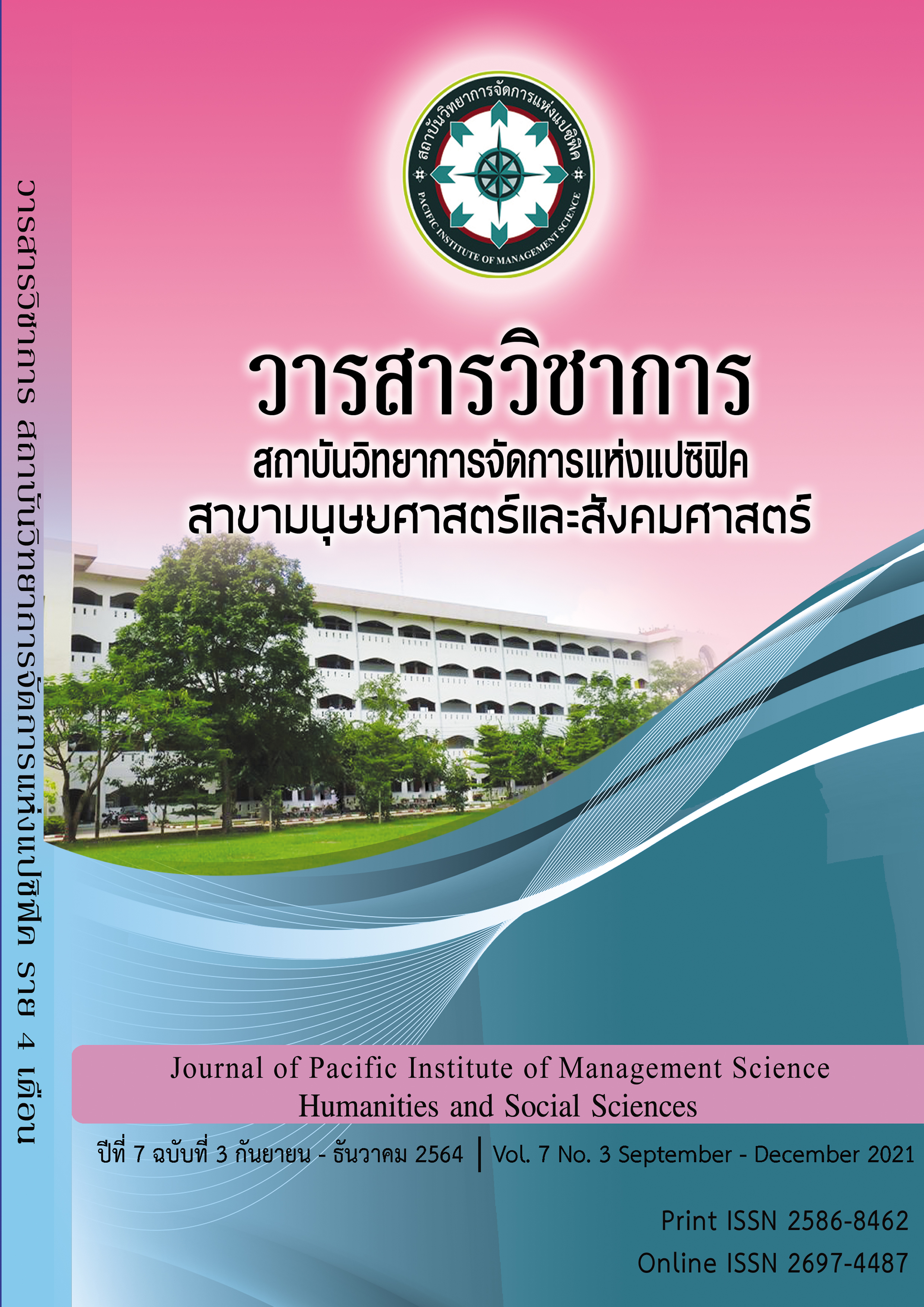The uses and gratification of exposure to information through social media to promote learning of undergraduate students of Saint John's University
Keywords:
The uses and gratification, The exposure to information through social media, Promote learning, Undergraduate students of Saint John's UniversityAbstract
The purpose of this study were to 1) study the behavior of exposure to information through social media to promote learning of undergraduate students of Saint John's University 2) study the uses of exposure to information through social media to promote learning of undergraduate students of Saint John's University 3) study the gratification of exposure to information through social media to promote learning of undergraduate students of Saint John's University. The researcher used a mix-methods of quantitative research and qualitative research for study method. The population of this study was undergraduate students of Saint John's University. The data was collected using questionnaires and interview form as a tool for data collection.
Result of the study found that : Types of social media used to exposure to information through social media to promote learning was Facebook, The type of social media that is most exposed to information to promote learning was Google+, The frequency of accessing social networks to receive information to promote learning is the most at more than once per day, The average amount of time spent in social networks to promote learning each day the most is 30 minutes -1 hour, Time period using social networks to receive information to promote learning the most often is between 20.01-24.00, The place that is most accessible to social networks in order to receive information to promote learning : the largest number was the house, A device for accessing social networks in order to receive information to promote learning as much as possible : the largest number was cell phones / smartphones, The most common aspect of using social media to expose information to promote learning was talk / conversation, The most widely accepted type of information to promote learning was travel, The type of information that is most open to promoting learning was news, Information exposure behavior to promote learning through social networks : the largest number was selected to read only the subject of interest, Taking advantage of exposure to information via social media to promote learning, it was found that the samples took advantage of their exposure to information via social media to promote learning : overall, it was at a high level with a total average of 4.44, The satisfaction of information exposure via social media to promote learning was found that the samples were satisfied with their exposure to information through social media to promote learning : overall, it is at a high level with a total average of 4.44
References
กาญจนา แก้วเทพ.(2552). การวิเคราะห์สื่อ:แนวคิดและเทคนิค. กรุงเทพฯ: จุฬาลงกรณ์มหาวิทยาลัย, คณะนิเทศศาสตร์ .
ศิริชัย ศิริกายะ, และกาญจนา แก้วเทพ. (2531). ทฤษฏีการสื่อสารมวลชน. กรุงเทพฯ: จุฬาลงกรณ์มหาวิทยาลัย, คณะนิเทศศาสตร์ .
ปรมะ สตเวทิน. (2546). การสื่อสารมวลชนกระบวนการและทฤษฏี. กรุงเทพฯ: ภาพพิมพ์.
ยุบล เบ็ญจรงค์กิจ. (2534). การวิเคราะห์ผู้รับสาร. คณะนิเทศศาสตร์. กรุงเทพฯ : จุฬาลงกรณ์มหาวิทยาลัย.
ใบบัว นามสุข. (2555). พฤติกรรมการอ่านกับความพึงพอใจและการนาไปใช้ประโยชน์จากนวนิยาย
ออนไลน์ของเยาวชนไทย. วิทยานิพนธ์ปริญญามหาบัณฑิต, มหาวิทยาลัยธรรมศาสตร์, คณะวารสารศาสตร์และสื่อสารมวลชน .
ชฏาภรณ์ สวนแสน. (2556). พฤติกรรมการเปิดรับ แรงจูงใจ ความพึงพอใจ และการใช้ประโยชน์ จากข้อมูลข่าวสารบนเว็บไซต์หนังสือพิมพ์ไทยของกลุ่มผู้อ่านในเขตกรุงเทพมหานคร. วิทยานิพนธ์ปริญญามหาบัณฑิต, มหาวิทยาลัยธรรมศาสตร์, คณะวารสารศาสตร์และสื่อสารมวลชน .
องอาจ ฤทธิ์ทองพิทักษ์. (2539). พฤติกรรมการสื่อสารผ่านระบบเวิลด์ไวด์เว็บของนักศึกษาในเขต กรุงเทพมหานคร. วิทยานิพนธ์ปริญญามหาบัณฑิต, จุฬาลงกรณ์มหาวิทยาลัย.
อริชัย อรรคอุดม. (2545). ความคาดหวัง ความพึงพอใจ ในการใช้บริการระบบเครือข่าย อินเทอร์เน็ตในการหางานและสมัครงานของประชาชนในเขตกรุงเทพมหานคร. วิทยานิพนธ์ปริญญามหาบัณฑิต, มหาวิทยาลัยธรรมศาสตร์, คณะวารสารศาสตร์และสื่อสารมวลชน
Downloads
Published
Issue
Section
License
Copyright (c) 2022 Pacific Institute of Management Science

This work is licensed under a Creative Commons Attribution-NonCommercial-NoDerivatives 4.0 International License.
บทความที่ได้รับการตีพิมพ์เป็นลิขสิทธิ์ของ สถาบันวิทยาการจัดการแห่งแปซิฟิค
ข้อความที่ปรากฏในบทความแต่ละเรื่องในวารสารวิชาการเล่มนี้เป็นความคิดเห็นส่วนตัวของผู้เขียนแต่ละท่านไม่เกี่ยวข้องกับสถาบันวิทยาการจัดการแห่งแปซิฟิค และคณาจารย์ท่านอื่นๆในสถาบันฯ แต่อย่างใด ความรับผิดชอบองค์ประกอบทั้งหมดของบทความแต่ละเรื่องเป็นของผู้เขียนแต่ละท่าน หากมีความผิดพลาดใดๆ ผู้เขียนแต่ละท่านจะรับผิดชอบบทความของตนเองแต่ผู้เดียว







